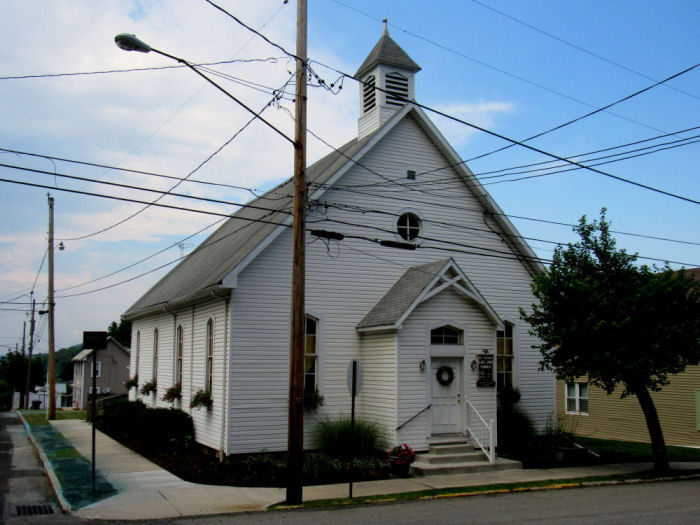
Mt. Pisgah A.M.E. Church
Although the structure itself is not necessarily unique, what it represents is.
The Mt Pisgah AME Zion Church was one of the congregations formed in western Pennsylvania as early as the 1840s. According to the sketch presented in The Kernel of Greatness, the Bedford congregation was formed in 1845. The name Mt Pisgah was derived from the Mount Pisgah on which the prophet Balaam gazed upon the Israelites and refused to curse God’s blessed people as requested by Balek.
When it was formed, the Bedford congregation numbered about thirty-seven. The first church edifice was a log structure located on Gravel Hill, to the west of the Penn and West Streets intersection. The deed for that property was made out in 1855, but not recorded in the Court House until 1866. Frederick and Eve Naugle sold the property to the Wesleyan Methodist Episcopal Zion Church of Bedford for the sum of $1. The 1877 Beers Atlas shows ‘African Church’ just within the Borough boundary. In the 1880s, the congregation moved to a new wood frame structure on the northeast corner of West and John Streets, where it is located today. The early pastors at Mt Pisgah participated in the Underground Railroad. The Reverend John Fiddler was very active in the movement toward freedom for slaves escaping from the south. The African Methodist Episcopal Church was incorporated in 1883.
The Mt Pisgah AME Zion Church went through some hard times in the mid 1900s. In 1956, Reverend G. Barton Williams was assigned to minister to the Bedford congregation. Two years later Reverend Barton’s wife died and he followed her shortly thereafter. Williams was replaced by Reverend David H. Bradley. The appointment proved to be beneficial for the congregation. Bradley’s political connections brought attention to the church and resulted in the Pennsylvania Governor establishing a fund to help refurbish the edifice. Over the next few years the church underwent many physical renovations. The congregation, though, continued to struggle due to the low numbers of African Americans in the Bedford community. Through the 1960s, the racial tensions that plagued the nation were felt in Bedford too, and many of the young people left. The Mt. Pisgah A. M. E. Zion congregation has persevered in spite of setbacks and dwindling numbers.





